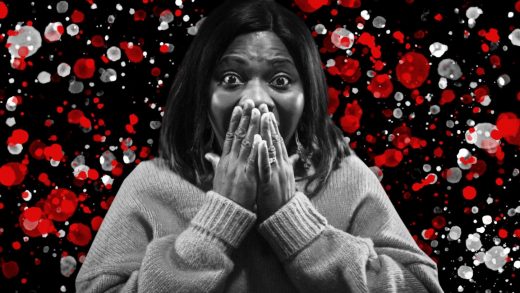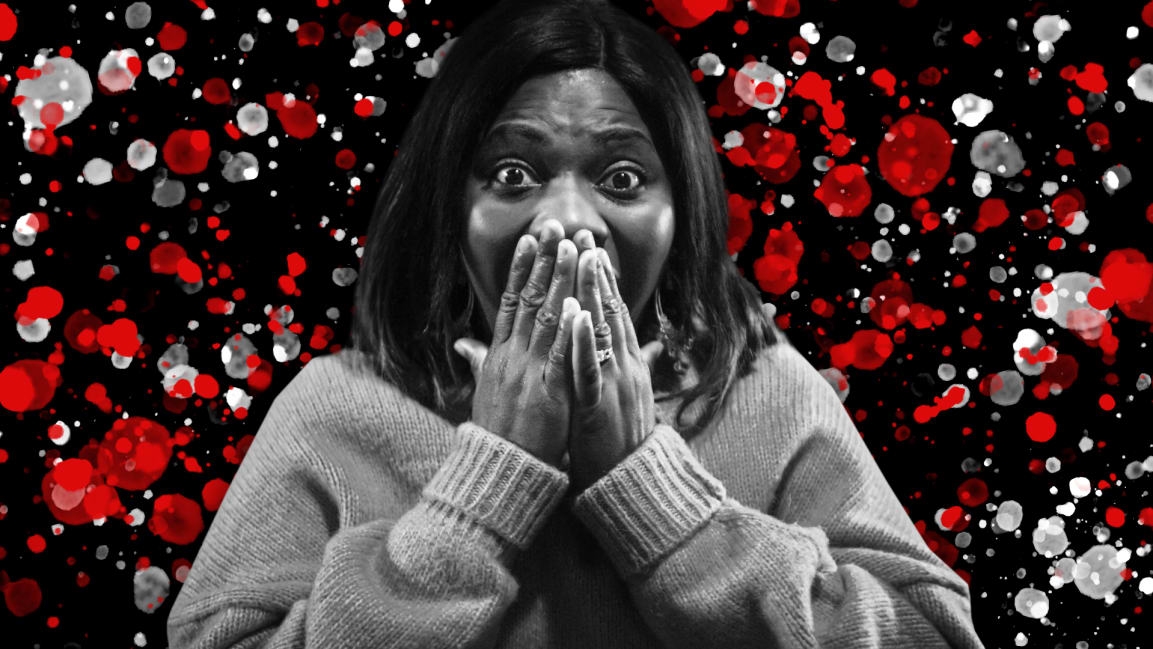Loving ‘Lovecraft Country’? 7 underrated movies featuring Black horror you need to see
Lovecraft Country has reenergized the conversation around Black people in horror.
Misha Green and Jordan Peele’s HBO adaptation of Matt Ruff’s bestselling novel centers around protagonist Atticus Freeman (Jonathan Majors) meeting up with his friend Letitia (Jurnee Smollett) and his uncle George (Courtney B. Vance) to venture on a road trip across the United States in search of his missing father (Michael K. Williams). The initial horror of their experience is that they have to risk the peril of getting caught up in sundown towns during 1950s Jim Crow, but eventually it’s obvious that there are two monsters our heroes have to fight—human beings committed to hatred, but also actual monsters called shoggoths.
There’s a moment in last week’s debut episode when the three protagonists are pulled over by police who start harassing them. They are pinned to the ground with guns pointed to their backs until the actual monsters show up and attack everyone. At one point, one of the two cops left keeps his gun trained on the protagonists while he watches his remaining colleague turn into a monster. The protagonists yell for him to shoot the monster and Atticus even attempts to take the gun, but the cop refuses, which obviously leads to his demise.
That is an interesting metaphor for the irrationality and short-sightedness of racism, and an example of how horror from a Black perspective has historically been used in pop culture to critique societal ills.
me watching them tryna get out of that sundown town in time #LovecraftCountry pic.twitter.com/HLlpcjAox3
— serenity???? (@serenityj_) August 18, 2020
The concept of the other is common in horror. It started with Birth of a Nation (1915), where the other was Black men. They were portrayed by white actors in blackface as boogeymen coming to destroy the sanctity of white womanhood. Birth of a Nation tapped into the psychological concept of white fear and rallied support for the Klan. It was effective in its marketing of a dangerous trope that still persists.
Thankfully, the film industry has progressed (albeit slowly), content has diversified over the years, and we have gotten better stories. While horror can be ridiculous, it isn’t just about slashers chasing people through the woods, virginal women tripping and falling in the woods, or people generally making egregiously silly decisions that get them killed (sometimes in the woods). That brings us to movies like Us or Get Out and now Lovecraft Country.
Black horror is back in the mainstream because it’s cathartic to watch the underdog—in this case, Black protagonists—slaying the beast.
The three main characters we’ve met in Lovecraft Country thus far have established the type of fearlessness we like to see. Uncle George demanded service in an obviously racist restaurant, Atticus, a war veteran, shot back at police after subsequently being chased and fired at after fleeing that restaurant, and Letitia has already shown that she has what it takes to be the final girl. Not only did she demand Uncle George get her name right after he refers to her dismissively as “girl”—another a major move for a woman in the ’50s—she also saves her friends at the end of the episode by out-running the beasts so that she could get to their car to use it as a weapon and get her friends to safety.
Okay… i gotta checkout #LovecraftCountry now. pic.twitter.com/R4dulpzgER
— I Don’t Know Martell (@SGrandLee) August 18, 2020
.@jurneesmollett is the MVP of this episode. She not only refused to be called by anything but her name, but she will go down in history as the Usain Bolt of horror scenes. THIS is how you do get away. #LovecraftCountry #OneLoveCraft pic.twitter.com/cDnVxQSrNQ
— theblerdgurl™? (@theblerdgurl) August 17, 2020
It was a satisfying series of events.
Given the kind of year it has been, we could use some catharsis. So, now that Lovecraft Country has horror noir back on our radars, here are seven classic Black horror movies to explore as well.
‘The Space Traders’ (1995)
This short film was adapted for TV by Reginald Hudlin. It aired on HBO’s science fiction anthology, Cosmic Slop. The premise is that aliens come to earth and promise salvation in the way of ending hunger, war, environmental crises, and technological advances if the people of Earth agree to handing over all of its melanated citizens. At the heart of the story is a conservative economics professor who is asked to join the president’s cabinet to discuss the trade. The professor is against making the swap—which they have about two weeks to figure out—but his white colleagues are for it, and they want him to convince the Black community to leave. The professor is under the impression that he will be able to escape the country with his family no matter what, due to his privilege. However, as the story unfolds, he is forced to examine his position in life, and comes to the conclusion that no matter how good his economic standing is or what his political views are, he’s still a Black man in America.
‘Sugar Hill’ (1974)
Sugar Hill is over an hour’s worth of supernaturally-laced blaxploitation-style revenge. Diana “Sugar” Hill (Marki Bey) goes on a rampage after the thugs who kill her fiancé after he refuses to give up his business. Unlike other gun-toting big bad mamas of the ’70s, Sugar Hill’s weapon of choice is voodoo. Obviously, the depictions of voodoo are ridiculous. However, it’s satisfying to watch Sugar Hill raise an army of “zombie hitmen” to do her bidding.
‘Abby’ (1974)
Abby is positioned as the black exorcist. It was actually almost going to be called “the blacksorcist.” Thankfully, someone had enough foresight not to go there. It revolves around a God-fearing Christian woman named Abby (Carol Speed) who gets possessed by a succubus after Dr. William (William Marshall), her archaeologist father-in-law, accidentally unleashes the spirit of an orisha deity of chaos during an excursion in Nigeria. There is no explanation for how the spirit crosses the Atlantic Ocean and attaches itself to Abby, who is in Kentucky, but obviously, you’re all in for these awesomely bad shenanigans so the plot holes probably won’t matter. While this movie was positioned as the Black exorcist, the use of West African spirituality (most of which they got wrong, but films in the 70s weren’t about research or being politically correct) sets it apart from the original Exorcist, which starred Linda Blair.
Obviously, the thought of a sex-crazed demon raping and killing people is scary. However, if you want to dig deeper, this could also be seen as a metaphor for fear of Black female sexuality. Abby can be problematic because the main character is a wild woman who needs to be tamed by men, but she is only worth protecting because of her initial piety. In 2020 terms, it’s the visual representation of what people see when women express agency over their bodies in pop culture. See the conservative response to Cardi B and Megan Thee Stallion’s “WAP,” for example.
‘Alien Vs. Predator’ (2004)
Two horror/sci-fi classics come together as the predators find a new prey in space. You guessed it, the predators end up hunting the aliens while they are terrorizing a crew of space explorers led by Alexa Woods (Sanaa Lathan). Woods figures out what the predators are up to and joins them in the hunt, which ultimately saves her life. In the end, the predators give Woods their signature facial mark, making her one of the crew. In short, we need to give Lathan her flowers for pulling off the rare feat of being a Black final girl. Lathan, who prior to that was typically known as the girl everyone falls in love with from movies such as The Wood, Brown Sugar, and The Best Man, changed the game.
‘The Craft’ (1996)
This classic about a group of misfit teenage girls who begin practicing magic flips teen angst on its head. There’s a lot going on as we look at how learning witchcraft helps these girls learn that they have more power than they realize while dealing with racism, classism, sexual violence, poverty, and slut shaming.
‘Tales from the Hood’ (1995)
Tales from the Hood is an anthology film that channels Tales From the Crypt. In this movie, a funeral director tells three drug dealers horrific tales with moral undertones, ranging from a ghost getting revenge for police brutality to mini dolls possessed by the spirits of former slaves who come to life and terrorize the owner of the plantation house they inhabit. It ends with the drug dealers learning that they actually just died and have landed in hell. It turns out they were killed in retaliation for a murder they committed in a vicious cycle of violence. Part two came out on Netflix last year, and part three is on the way.
‘Tales From the Crypt: Demon Knight’ (1995)
Tales From the Crypt: Demon Knight doesn’t get all deep with metaphors and social critiques, but the characters are badass. This is your standard, forces of darkness attempting to take over the world type of story, but in the end, it’s a Black woman (played by Jada Pinkett-Smith) who ends up saving the world and serving final girl realness.
Fast Company , Read Full Story
(25)



